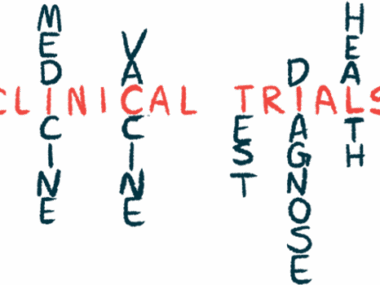NK cells in airways may predict more severe pulmonary sarcoidosis
Immune cells elevated in patients with lung fibrosis, marking advanced stage
Written by |

The percentage of natural killer (NK) immune cells in the airways were predictive of a more advanced stage of lung damage and multi-organ involvement in people with pulmonary sarcoidosis, according to a recent report.
Altogether, the scientists believe these cells could be “a good prognostic marker” of a more aggressive disease presentation, although they are likely to be less useful for diagnosing the disease.
The study, “Predictive role of natural killer cells in bronchoalveolar lavage fluid of patients with sarcoidosis,” was published in Pulmonology.
NK cells are a type of lymphocyte, a family of infection-fighting white blood cells
Sarcoidosis is characterized by the accumulation of small clumps of inflammatory cells, called granulomas, in tissues. In pulmonary sarcoidosis, granulomas form in the lungs, which ultimately can drive the inflammation and scar tissue formation (fibrosis) that affect lung function.
The composition of immune cells in the lungs can be useful for diagnosing sarcoidosis and other lung diseases. Currently, the best way to profile this is by examining a patient’s bronchoalveolar lavage fluid, or BAL.
This fluid is collected during a bronchoscopy, a procedure to visualize the airways where a small flexible tube attached to a camera is passed through the nose or mouth and into the lungs. During the procedure, salt water can be sent into the airways via the bronchoscope, and then suctioned back up. That collected fluid — BAL — will contain the same immune cell populations that are present in the lungs.
Typically, features of pulmonary sarcoidosis in BAL fluid include an overall rise in lymphocytes, a family of infection-fighting white blood cells that includes B-cells and T-cells, as well as an increased ratio of CD4-positive to CD8-positive T-cells (CD4/CD8 ratio). These findings can help to support a diagnosis.
More recent analyses indicate that the proportion of NK cells, another type of lymphocyte, in BAL fluid also may be able to diagnose pulmonary sarcoidosis and predict its course. These immune cells are best known for their role in limiting the spread of viruses and cancer cells.
The percentage of NK cells in BAL fluid has been shown to be lower in pulmonary sarcoidosis than other chronic lung diseases. Still, higher levels are associated with worse outcomes and a need for corticosteroid treatment in sarcoidosis patients.
Scientists in Italy examined NK cells from BAL samples taken from sarcoidosis patients at the time of diagnosis, aiming to identify their possible role in predicting a patient’s prognosis.
The analysis included 248 people diagnosed with sarcoidosis, as well as 28 people initially suspected of sarcoidosis but who were ultimately diagnosed with something else (the control group).
Lymphocyte percentages and the CD4/CD8 ratio were significantly higher in the sarcoidosis group than in controls, consistent with previous analyses. Other clinical factors, including lung function and demographics, did not differ between the groups.
NK cell percentages in BAL seen to indicate pulmonary sarcoidosis stage
Patients in the most advanced stage of sarcoidosis, characterized by fibrosis in the lungs, were found to have poorer lung function than patients at less advanced stages. They also had higher lymphocyte percentages in their BAL, with particular elevations in NK cells.
Final analyses indicated that the percentage of NK cells was the only BAL finding that significantly predicted fibrotic sarcoidosis, with an accuracy of about 85%. NK cell percentages in combination with the CD4/CD8 ratio had an even better predictive accuracy — 94% — for distinguishing these patients from others with less advanced disease.
Of 184 patients with available data, sarcoidosis also affected tissues outside of the lungs in 75 people.
Again, NK cells were found to be the marker most predictive of these extrapulmonary manifestations. Patients with a higher number of extrapulmonary granuloma localizations, indicating multi-organ involvement, also showed higher percentages of NK cells in BAL fluid.
“NK cell percentages in BAL fluid were a good prognostic marker of fibrotic phenotypes of sarcoidosis and involvement of other organs, although their diagnostic utility was poor,” the researchers concluded.
Altogether, these and previous findings “agree on a potential role of NK cells in the development of a more aggressive disease phenotype [presentation],” the researchers wrote.
“More detailed study of NK cell subsets in BAL fluid may provide useful information on the pathogenetic involvement of these cells in granuloma formation and allow better management of patients requiring corticosteroid therapy,” they added.






